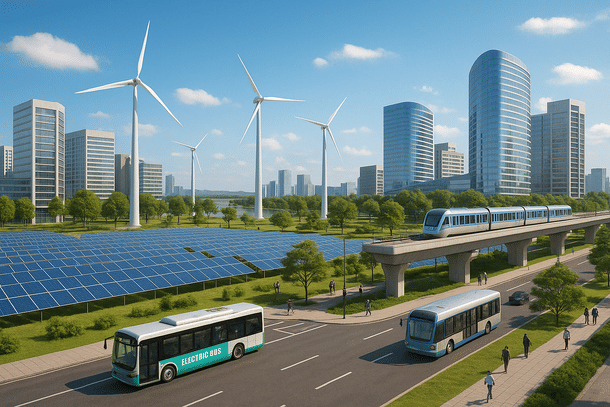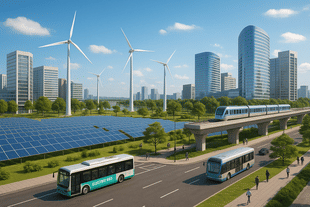News Brief
Andhra Pradesh’s Amaravati Capital City Project Eyes Global First With 100 Per Cent Renewable Power Goal
Swarajya Staff
Apr 20, 2025, 05:31 PM | Updated 05:33 PM IST
Save & read from anywhere!
Bookmark stories for easy access on any device or the Swarajya app.


Andhra Pradesh's planned capital city, Amaravati, aims to become the world’s first fully renewable energy powered city, with town planners looking to build an ultra-modern yet environmentally sustainable 'people's capital', news agency PTI reported.
The new city aims to meet all its electricity needs via sustainable source like solar, wind and hydropower. Officials have reportedly planned to harness 2,700 megawatts (MW) of green energy for the city.
Andhra Chief Minister N Chandrababu Naidu’s vision for Amaravati aligns with India’s national climate goals and its drive toward clean energy leadership.
Prime Minister Narendra Modi is reportedly expected to lay the foundation stone of the greenfield capital on the Krishna riverbanks early next month.
The Rs 65,000-crore project is spread across 217 square kilometers, with Andhra Pradesh Capital Region spanning an area of 8,352 sq km.
Planned between Vijayawada and Guntur, Amaravati will showcase India’s innovation in green urban planning and reinforce the country's leadership in the global clean energy transition.
With a 2,700 MW capacity, Amaravati seeks to eliminate fossil fuel reliance while setting new global standards in sustainable urban development.
Amaravati’s smart city blueprint includes integrated clean energy infrastructure, positioning it as a model for next-generation global cities.
By 2050, Amaravati’s projected power demand of 2.7 GW will be met with at least 30 per cent from renewable energy, including solar and wind energy, according to officials.
At least one-third of rooftop space in all government housing projects must be equipped with solar panels, as per new green building regulations.
All major constructions, including the government housing in the Amaravati Government Complex, will follow green norms to maximise energy efficiency and minimise carbon emissions.
Further, public transport - including the Amaravati Metro and an electric bus fleet - will run on renewable energy.
Widespread EV charging stations will be installed across the city to support public and government electric mobility.
Officials plan to harness solar energy from parks, walkways, and roadside bus depots.
"Amaravati is being built as a sustainable, future-ready capital city with a strong emphasis on renewable energy and energy-efficient infrastructure," an official was quoted as saying by PTI.
Already, 415 kW of rooftop solar has been installed across Anganwadis, public schools, and other places.
"All government and commercial buildings will be mandated to install solar panels and adopt net metering," he said.
A centralized district cooling system is also being designed to cut cooling energy use in government complexes.
Cooling infrastructure is a top priority for Andhra Pradesh as the state faces the the highest number of heat wave days in South India with temperature as high as 47.7 degrees in 2024.
Cooling demand includes those for buildings (air-conditioning), cold-chain, refrigeration, transport and industries.
In 2019, APCRDA signed India’s first PPP concession with Tabreed to develop a district cooling system for the government complex area within the planned capital city of Amaravati.
The system, with a 20,000 RT capacity, is meant to serve Amaravati’s key administrative buildings.
Under this pact, Tabreed reportedly committed to designing the system to deliver 50 per cent electricity demand reduction for cooling buildings like the High Court and Secretariat.
District Cooling systems lower energy loads for air-conditioning, cutting both power use and carbon emissions significantly.
Also Read: 'No Room Left For The Tanker Mafia': Delhi CM Rekha Gupta Flags Off 1,111 GPS-Enabled Water Tankers





